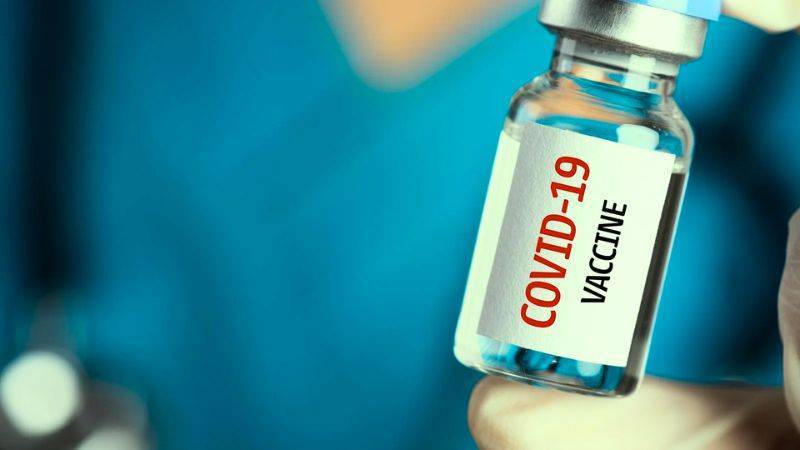Vaccination is an essential tool in controlling the spread of the virus and reducing the severity of the disease.
COVID-19 vaccines have been developed to provide protection against the SARS-CoV-2 virus, which causes COVID-19. Several COVID-19 vaccines have been authorized or approved for emergency use in various countries.
Let’s delve into the different approaches to make COVID-19 Vaccines:
Different Types of COVID-19 Vaccines
mRNA Vaccines
Pfizer-BioNTech and Moderna have developed mRNA vaccines that use a small piece of genetic material from the SARS-CoV-2 virus to stimulate an immune response. These vaccines require two doses administered several weeks apart.
Vector Vaccines
AstraZeneca, Johnson & Johnson, and Sputnik V are examples of vector vaccines that use harmless viruses (not SARS-CoV-2) to deliver a small piece of the virus’s genetic material and trigger an immune response. These vaccines may require one or two doses, depending on the specific vaccine.
Inactivated Vaccines
Some vaccines, such as Sinovac and Bharat Biotech’s Covaxin, use inactivated or killed versions of the SARS-CoV-2 virus to induce an immune response. These vaccines usually require two doses.
Why Different Types of Vaccines?
The presence of numerous COVID-19 vaccines in development is due to several factors:
Urgency and Global Impact: COVID-19 is a global health crisis that has affected millions of people worldwide. The urgent need for effective vaccines has spurred a significant research and development effort across the globe.
Diverse Scientific Approaches: Scientists have employed various scientific approaches to develop COVID-19 vaccines. This diversity increases the likelihood of finding vaccines that are safe, effective, and suitable for different populations.
Robust Vaccine Development Process: Vaccine development involves multiple stages, including preclinical studies, clinical trials, and regulatory approvals. Many vaccine candidates are evaluated during these stages to determine their safety, efficacy, and ability to induce an immune response.
Addressing Different Challenges: The COVID-19 pandemic has presented unique challenges, such as emerging variants of the virus. Having multiple vaccines in development allows for a broader exploration of solutions to address these challenges, such as developing booster shots or vaccines specifically targeting new variants.
Booster Doses

A booster dose is an additional dose of a vaccine given after the primary vaccination series. It aims to enhance and extend the protection provided by the initial doses.
Booster doses may be necessary to address waning immunity over time or to provide protection against new variants of the virus.
How Do Vaccine Work?
Germs are omnipresent, existing in both our surroundings and our bodies. When a susceptible individual encounters a harmful organism, it can result in illness and even death.
The body possesses several defense mechanisms against disease-causing pathogens. Physical barriers like the skin, mucus, and cilia (microscopic hairs) in the respiratory system prevent pathogens from entering the body initially.
If a pathogen manages to infect the body, the immune system is activated and mounts a response to attack and eliminate the pathogen.
The natural response of the body involves recognizing the antigens present on the pathogen. Antigens are unique subparts of the pathogen that stimulate the production of antibodies.
Antibodies act as soldiers within the immune system, with each antibody trained to recognize a specific antigen. When a person encounters an antigen for the first time, the immune system takes time to produce specific antibodies. In the meantime, the individual remains susceptible to illness.
Vaccines play a significant role in this process. They contain weakened or inactive parts of a specific organism (antigen) that stimulate an immune response in the body.
The weakened version of the pathogen in the vaccine does not cause the disease but triggers the immune system similar to an actual pathogen, creating immunity.
Certain vaccines require multiple doses administered over weeks or months. This allows for the development of long-lasting antibodies and memory cells.
Through vaccination, the body is trained to combat the specific disease-causing organism, building a memory of the pathogen to swiftly respond in the future.
Herd immunity is another important aspect. While not everyone can be vaccinated due to underlying health conditions or severe allergies, those who are vaccinated contribute to the protection of vulnerable individuals.
When a significant portion of a community is vaccinated, the pathogen finds it challenging to circulate since most encounters are with immune individuals. Thus, herd immunity reduces the risk of exposure to harmful pathogens for those who cannot be vaccinated.
Vaccination not only safeguards the individual but also protects the community, particularly individuals who are unable to receive vaccines.
It is crucial to get vaccinated if one can, as throughout history, vaccines have proven successful in preventing life-threatening diseases such as meningitis, tetanus, measles, and polio.
Who Can Receive Different Doses

Most COVID-19 vaccines require multiple doses to achieve optimal protection. The specific dosing regimen may vary depending on the vaccine.
The eligibility for different doses of COVID-19 vaccines can vary based on factors such as age, underlying health conditions, and the specific vaccine being administered. Here is some general information regarding the doses of COVID-19 vaccines:
Two-Dose Vaccines:
- Pfizer-BioNTech: The Pfizer-BioNTech COVID-19 vaccine typically requires two doses administered 3 to 4 weeks apart. It has been authorized for individuals aged 12 years and older in many countries.
- Moderna: The Moderna COVID-19 vaccine is also administered in two doses, usually 4 weeks apart. It is authorized for individuals aged 18 years and older.
Single-Dose Vaccines:
- Johnson & Johnson: The Johnson & Johnson COVID-19 vaccine is a single-dose vaccine authorized for individuals aged 18 years and older. It does not require a second dose.
It is important to note that the eligibility criteria for different doses of COVID-19 vaccines can vary across countries and regions. Additionally, the availability of specific vaccines may differ in different locations.
To determine the appropriate vaccine doses and eligibility, it is recommended to refer to the guidelines provided by local health authorities or consult with healthcare professionals in your area.
How and Where to Get Vaccinated
COVID-19 vaccination is typically administered by healthcare professionals, vaccination centers, or authorized clinics. The process for scheduling appointments and receiving the vaccine varies depending on the country or region. To get vaccinated, you can:
- Check your country’s official health department website for information on vaccine availability, eligibility criteria, and vaccination centers.
- Contact your primary healthcare provider or local health authorities for guidance on vaccine appointments and locations.
- Stay informed about any public vaccination campaigns or initiatives in your area.
Safety and Side Effects

COVID-19 vaccines authorized for emergency use or approved by regulatory agencies undergo rigorous testing to ensure safety and efficacy.
Common side effects of COVID-19 vaccination can include
- Pain or swelling at the injection site
- Fatigue
- Headache
- Muscle pain
- Chills
- Fever
- Nausea
These side effects are generally mild and temporary, resolving within a few days.
Serious side effects are rare but can occur. It is essential to consult healthcare professionals or seek medical attention if you experience severe or persistent symptoms after vaccination.
Health authorities closely monitor vaccine safety and provide updated information.
Remember, information about COVID-19 vaccines and vaccination processes may vary over time and across regions. Stay informed by referring to reputable sources and follow the guidance provided by your local health authorities.
Co-WIN and Covaxine
Co-WIN
Co-WIN, which stands for COVID Vaccine Intelligence Network, is an online platform developed by the Government of India for the management and administration of COVID-19 vaccination.
It serves as a digital ecosystem that facilitates the registration of individuals for vaccination, appointment scheduling, tracking of vaccine stocks, and generation of vaccination certificates.
Key features of Co-WIN include:
- Registration and Appointment Booking: Eligible individuals can register on Co-WIN and book appointments for COVID-19 vaccination at designated centers.
- Vaccination Certificates: Co-WIN provides digital certificates to individuals upon vaccination, serving as proof of immunization.
- Vaccine Inventory Management: The platform enables real-time monitoring and management of vaccine stocks at various centers, ensuring efficient distribution and availability.
- Reporting and Analytics: Co-WIN generates reports and analytics related to vaccination coverage, doses administered, and other relevant data for effective monitoring and decision-making.
Co-WIN has played a crucial role in the vaccination drive in India, helping streamline the process and ensure efficient administration of COVID-19 vaccines.
Covaxin
Covaxin is an indigenous COVID-19 vaccine developed by Bharat Biotech, an Indian biotechnology company in collaboration with the Indian Council of Medical Research (ICMR) and the National Institute of Virology (NIV).
Covaxin is an inactivated vaccine, which means it contains killed or inactivated SARS-CoV-2 virus particles that cannot cause the disease but can trigger an immune response.
Key points about Covaxin:
- Efficacy: Covaxin has demonstrated efficacy against COVID-19 in clinical trials. The exact efficacy may vary based on factors such as age group and variant of the virus.
- Two-Dose Schedule: Covaxin is administered as a two-dose regimen, with the second dose given a few weeks after the first dose. The specific dosing interval may vary based on evolving recommendations.
- Approval and Authorization: Covaxin received emergency use authorization from the Drugs Controller General of India (DCGI) based on the evaluation of safety and efficacy data from clinical trials.
- Side Effects: Like any vaccine, Covaxin may have potential side effects. These side effects are generally mild and resolve within a few days.
Also Read






